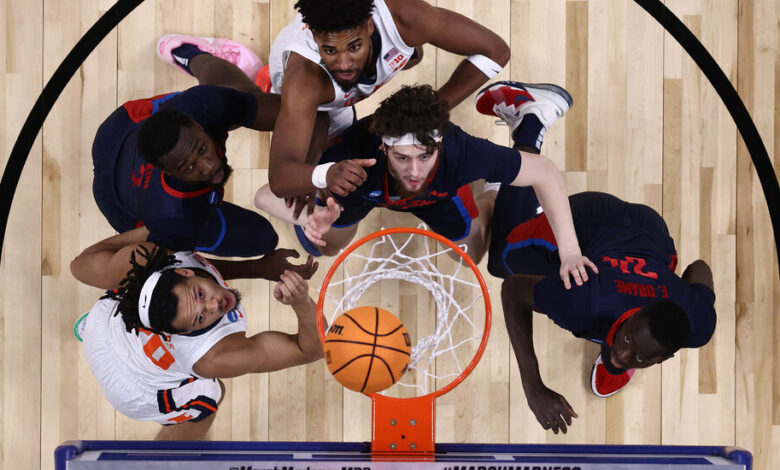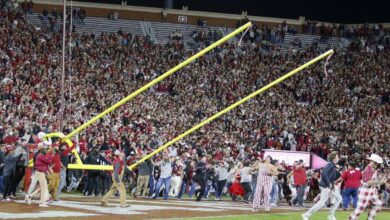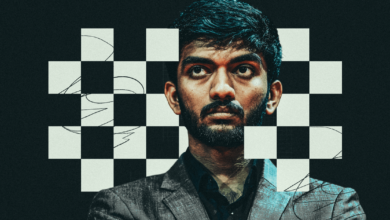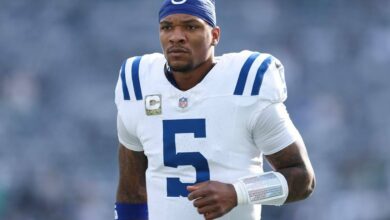The NCAA agreed to pay players. It won’t call them employees.

The immediate takeaway from the historic $2.8 billion settlement that the NCAA and the major athletic conferences accepted Thursday was that it goes to the heart of the organization’s cherished model of amateurism: Schools can now pay their athletes directly.
But there is one more fundamental principle that remains intact and will likely be a priority for the NCAA: Players paid by universities are not employees of those universities and therefore have no right to collective bargaining.
Congress must “establish that our athletes are not employees, but students pursuing a college degree,” said John I. Jenkins, president of the University of Notre Dame, said in a statement when the deal was announced.
It’s the NCAA’s attempt to salvage the last vestiges of its amateur model, which for decades has prohibited college athletes from being paid by schools or anyone else without jeopardizing their eligibility. That stance has come under increased legal and political scrutiny in recent years, leading to the settlement, which still needs judge approval.
At first glance, the argument might seem odd. Over the past decade, public pressure and a series of court decisions—not to mention the reality that college athletics generated billions of dollars in annual revenue and athletes received none of it—forced the NCAA to unravel its limits on player compensation. A California law making it illegal to strip college athletes of their name, image and likeness, or NIL, paved the way for athletes to seek compensation, with some receiving seven figures annually.
At the same time, college sports have increasingly become a national endeavor. Regional rivalries and traditions have been cast aside as schools have switched their conference allegiances in search of TV money. Individual conferences can now stretch from Palo Alto, California, to Chestnut Hill, Massachusetts, meaning many athletes across sports spend more time traveling to games and less time on campus.
“I don’t know how you can call them not employees at this point,” said Adam Hoffer, director of Excise Tax Policy at the Tax Foundation and a former economics professor at the University of Wisconsin-La Crosse. “The NCAA is starting to look more and more like a professional league than it ever has before.”
But the position fits with the NCAA’s long-standing position that classifying athletes as employees is a potential death knell for college sports. In February, the organization’s president, Charlie Baker, said Congress should pass legislation to protect the “95 percent” of college athletes he said would be harmed by a ruling recognizing them as employees. He said many universities outside the so-called power conferences were already losing money on athletics and that spending more on player pay could lead some to eliminate teams.
Much remains unclear about the settlement, which stemmed from an antitrust lawsuit. If a federal judge in California approves it, schools will decide how to divide up the revenue they set aside to share with athletes — as much as $20 million.
By settling, the NCAA is counting on Congress to grant it an antitrust exemption that would protect the country from further lawsuits over compensation, which would reportedly harm its ability to make its own rules. In recent years, the organization has spent millions lobbying the government to create an antitrust exemption similar to that of professional baseball.
The settlement is also an effort by the NCAA to limit the amount of money its institutions must pay athletes, said William W. Berry III, a law professor at the University of Mississippi who has addressed the issue of player compensation in college athletics studied. Under the formula laid out by plaintiffs in the case, the settlement would pay the players approximately 22 percent of future earnings. Mr. Berry noted that this was much lower than the shares paid to players in professional leagues such as the National Football League and the National Basketball Association.
“What they’ve done with the settlement is they’re saying, ‘We’re going to share some of the proceeds with you,’” Mr. Berry said, adding that a loss in court could have funneled even more money to the players and would have been financially devastating for the NCAA.
Following the award of NIL, athletes attempted collective bargaining. In February, a federal judge in Boston ruled that players on the Dartmouth basketball team had the right to unionize and should be considered employees. Dartmouth is appealing the decision. At the University of Southern California, football and basketball players are trying to win the right to unionize and be classified as employees. The settlement could strengthen those arguments.
“One of the hallmarks of employment is that you are compensated for your services,” said Matthew Mitten, a law professor at Marquette University and executive director of the National Sports Law Institute.
But the settlement itself is unlikely to lead to a major push for unionization in college athletics. Dartmouth is a small, private school in New Hampshire, with laws that favor unionization. Many football powerhouses, such as the University of Alabama and the University of Georgia, are in right-to-work states, where unionization faces stiff legal and political obstacles.
And non-union compensation could be the preferred route for some athletes at the biggest revenue-generating schools.
“I think it’s pretty unlikely that the athletes at the Power Four schools would want to unionize,” Mr. Mitten said, referring to the Atlantic Coast, Big Ten, Big 12 and Southeastern Conferences.
But the NCAA is facing a major change, even though its athletes will no longer be considered employees.
“The fact that schools will likely have to pay these players means the existing business model has to change,” Mr Hoffer said.




